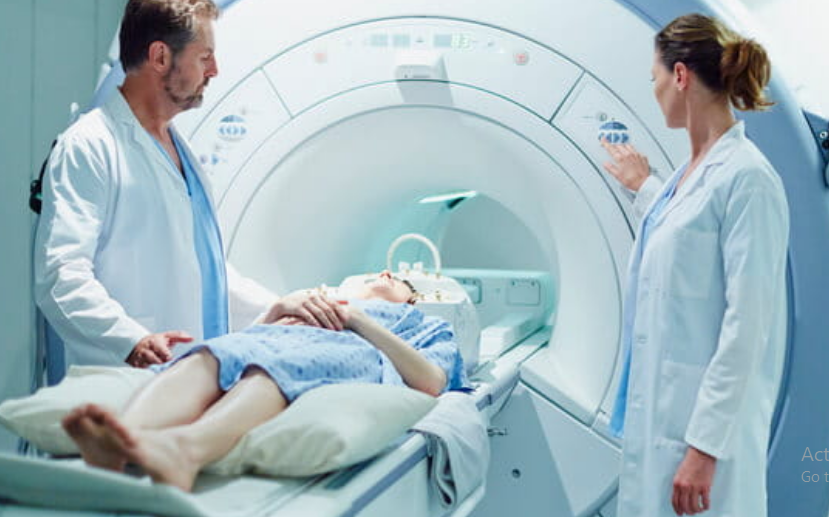MRI Safety Considerations in Neurosurgical Patients with Implants: Guidelines and Best Practices The MRI generally deals with the brain and spine and is a very important modality of diagnosis and follow-up. Added precautions should be taken to ensure safety and efficacy in these procedures in patients with neurosurgical implants. Understanding the safety issues of MRI in such patients will help prevent complications and ensure accurate imaging.
Many neurosurgical implants, such as clips, plates, and stimulators, can be affected by the magnetic field of the MRI. There is a possibility that this might cause malfunction of the device or injury to the patient. Before proceeding with an MRI, it is very important to know how to properly evaluate a patient’s medical history and the specific characteristics of the implant.
The outcomes of patients can be vastly affected by proper planning and knowledge of MRI safety protocols. The clinicians should have appropriate information about the type of implant and the measures they must observe.
Key Takeaways
- MRI procedure is based on the type of neurosurgical implant.
- A pre-procedure detailed assessment may reduce complications.
- The safety of the patient is the utmost priority during the planning phase of an MRI with implants.
MRI Safety Framework for Neurosurgical Implants
Understanding the safety framework of MRI in neurosurgically implanted patients is important. It includes risk assessment, magnetic field interaction, radiofrequency energy exposure, and gradient magnetic fields.
Assessment and Classification of Risk
The process of risk assessment should start with an idea of what type of implant a given patient has. The implant may be compatible or non-compatible with MRI. Compatibility classification informs clinicians about the degree of specific risk the implant carries.
Key factors to consider include:
- Type of Material: There are a number of metals that can function poorly under MRI.
- Design of the Implant: The geometrical shape and internal structure can affect safety.
- Manufacturer Guidelines: Always establish the particular MRI compatibility rating given by the manufacturer.
Thus, critical assessment may allow for adequate preparation of suitable planning for safe MRI procedures in patients with neurosurgical implants.
Magnetic Field Interactions
The magnetic fields affecting implants do so in a variety of ways. In general, the two main concerns with magnetic fields are magnetism and implant motion.
Concerns include:
- Ferromagnetism: A ferromagnetic material may move during the MRI, creating risks.
- Torque: Some implants might result in spinning or shifting within the body.
- Heating Effects: The interaction of the magnetic field with the implant causes heating in some types of materials, sometimes referred to as a Joule heating effect.
Understanding these interactions is important to minimize the potential hazards from MRI scans.
Radiofrequency Energy Exposure
When approaching the topic of MRI safety, one of the most important factors to address is radiofrequency energy exposure. This type of energy is emitted during scans and, because of this, there are a variety of possible implications for implants.
Some possible issues to consider:
- Heating of the Device: The energy of RF is absorbed in some materials; it is undesirable in heating.
- Electrical Impedance: The design of the implant may affect how RF energy is dissipated.
- Patient Safety: The amplitude of RF energy can be associated with patient discomfort and potential injury.
This monitors these factors and ensures the safety of the patient during the process.
**
Gradient Magnetic Fields and Induced Electric Fields
In MRI, gradient magnetic fields are highly important. These magnetic fields can sometimes cause the induction of electric fields, which may interfere with the implant and also the tissue surrounding it.
Key facts
Induced currents: It is possible to produce induced currents in conducting objects through variation in the magnetic field.
Risk of stimulation: this may thus lead to contraction of muscles, which is undesirable.
Safe Design: It should be so designed to minimize the induction of currents by gradient fields in implants. Now, we arrive at an MRI environment which is safer for patients having neurosurgical implants.

Also Read :
- The Role of MRI in Neurosurgical Treatment of Pituitary Tumors
- Challenges and Advances in MRI-Guided Neurosurgical Ablation
- Integration of MRI and Robotics in Neurosurgical Procedures
- Functional MRI for Neurosurgical Planning in Brain Tumor Surgery
- Intraoperative MRI and the Future of Neurosurgical Navigation
